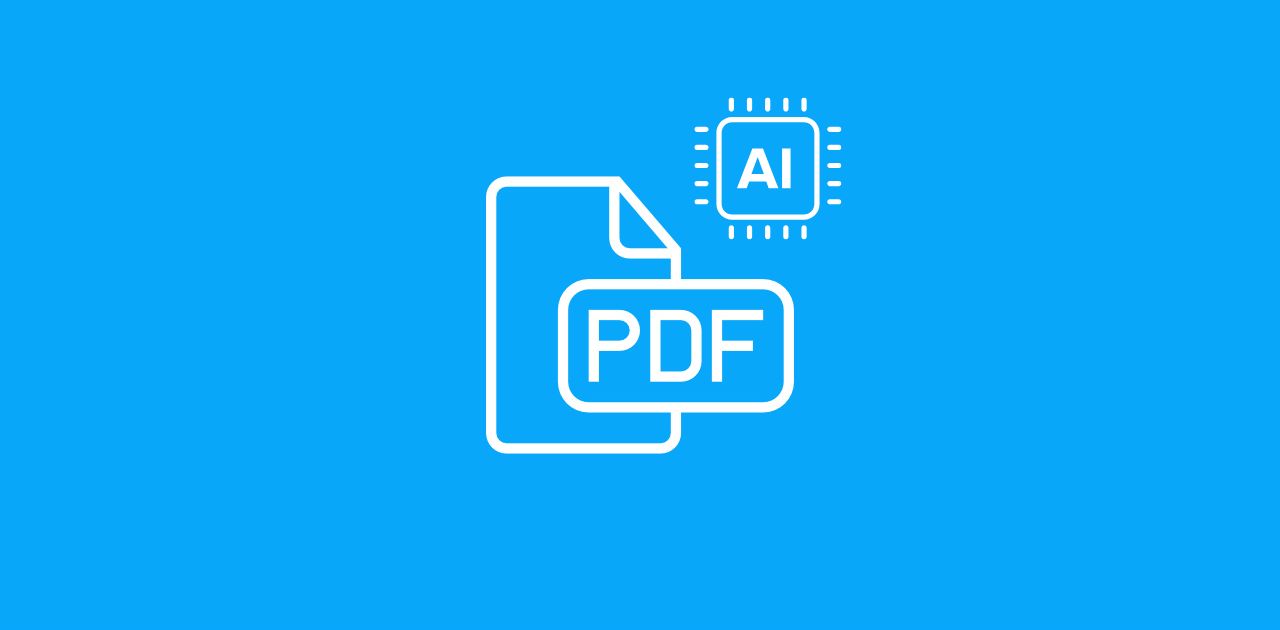
Ever found yourself scrambling through a 50-page PDF, searching for key insights under pressure? The walls of dense text, endless tables, and static layouts slow you down. But not anymore. Artificial intelligence (AI) is reshaping the way we interact with PDFs.
Originally introduced by Adobe in the 1990s, the Portable Document Format (PDF) has long been the gold standard for preserving layout and sharing content across platforms. Today, AI is breathing new life into this classic format—transforming how professionals across legal, academic, business, and government sectors access and use information.
Let's dive into how AI is revolutionizing the world of PDFs—and why it matters to you.
The Role of AI in Transforming PDFs
AI, powered by machine learning, natural language processing (NLP), and computer vision, is redefining PDF interaction. No longer just static files, PDFs are becoming smart tools that boost productivity and accessibility.
Here's how AI is making it happen:
- Summarization: Tools like ChatPDF let you ask questions and get instant, context-aware answers from PDFs. Need the main points of a 100-page report? AI summarizes it in seconds.
- OCR and Text Extraction: AI-powered optical character recognition (OCR) converts scanned PDFs into editable text with remarkable accuracy.
- Data Extraction: AI automates pulling structured data from PDFs, like invoice details or contract terms.
- Translation and Accessibility: AI translates PDFs into multiple languages, generates audio versions, simplifies complex text, and even transcribes audio recordings into written text. These features make documents accessible to diverse audiences, including those with disabilities.
These features make PDFs more than just files—they're now interactive hubs for information.
Real-World Impact Across Industries
AI's impact on PDFs is transforming workflows across sectors. Here's how:
- Legal Sector: Law firms use AI to review contracts and case files faster. For example, Clio reports AI can analyze 2,000 contracts in under six hours with 96% accuracy, compared to 80+ hours with 10-20% human error.
- Academic Research: Researchers rely on AI to summarize lengthy papers, speeding up literature reviews. AI tools can extract key insights, letting academics focus on analysis.
- Business and Finance: Companies automate data extraction from PDF invoices and financial statements.
- Government and Healthcare: AI digitizes legacy documents via OCR, making archives searchable and accessible, which is critical for compliance and record-keeping.
Challenges to Watch
AI still isn't perfect. Human oversight is crucial to ensure accuracy. Also, processing unstructured PDFs can be problematic due to noise, skewed scans, or non-standard layouts—but AI models are improving rapidly.
The Future of AI and PDFs
The Intelligent Document Processing (IDP) market, which includes technologies that automate and analyze PDFs, is experiencing explosive growth. According to Fortune Business Insights, the global IDP market was valued at USD 7.89 billion in 2024 and is projected to reach a staggering USD 66.68 billion by 2032, growing at a compound annual growth rate (CAGR) of 30.1%.
This growth is fueled by the increasing need for automation, accuracy, and speed in handling unstructured and semi-structured data—much of which is locked inside PDFs.
What's Next?
Looking ahead, we can expect:
| Future Trend | What It Means for PDFs |
|---|---|
| 🤖 Smarter AI models | Understand document context |
| 🔗 Deeper platform integration | Seamless use across apps & systems |
| ⏱️ Real-time document intelligence | Faster decisions and insights |
| ☁️ Scalable PDF automation tools | Affordable solutions for all businesses |
As digital transformation continues, PDFs—once seen as static files—are becoming dynamic, intelligent assets powered by AI.
AI Tools in Action: PDF2Go Leads the Way
As AI redefines how we work with documents, platforms like PDF2Go are at the forefront. Known for its powerful PDF editing and conversion tools, PDF2Go has begun rolling out AI-powered features to help users work more efficiently. Whether it's enhancing OCR accuracy, turning speech to text, or making scanned documents searchable, these tools are designed to save time and boost productivity.
Tips for Using AI-Powered PDF Tools
- Choose the Right Tool: Pick based on your specific task—summarizing, extracting data, translating, or editing.
- Check File Compatibility: Make sure your file isn't password-protected or corrupted before uploading.
- Use OCR for Scanned Docs: Tools like PDF2Go excel at turning scanned images into editable text.
- Verify AI Outputs: Always double-check summaries or extracted content, especially for legal or financial use.
- Explore Free Trials: Many platforms offer free plans or demo versions—test features before committing.
In Conclusion
AI is pushing PDFs into exciting new territory, transforming them from static files into dynamic tools for productivity and accessibility. Whether you're summarizing research, extracting data, or translating documents, AI-powered tools make it faster and easier. For online conversion services, integrating AI—like smarter OCR or automated formatting—elevates the user experience.
As the IDP market grows, embracing these innovations will help you work smarter, not harder, with PDFs.

